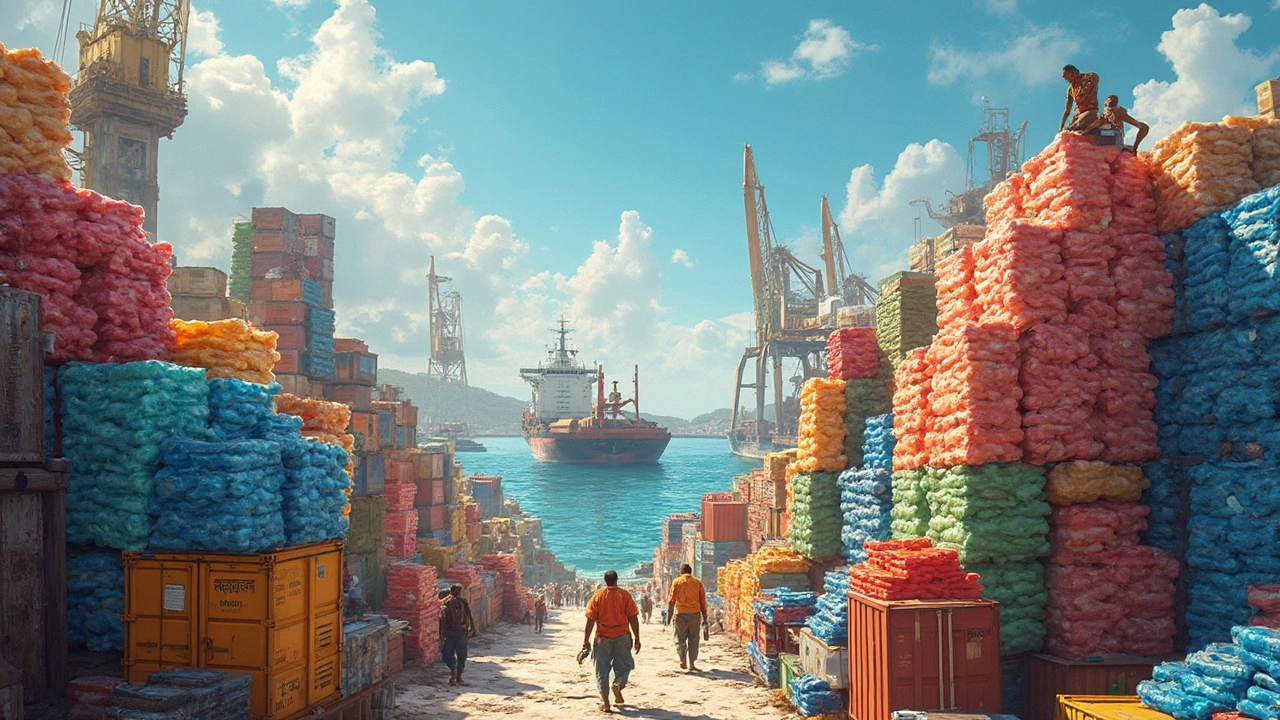- Top Pharma Plants in India: Leading Manufacturers in 2025 Oct 17, 2025
- Why Are Drugs Cheaper in India? Pharma Manufacturing Secrets Uncovered Jun 15, 2025
- Who Dominates the Electronics Manufacturing Industry Today? Jan 13, 2025
- Who's Really Behind Plastic Pollution? Feb 5, 2025
- Navigating the Path to Small Scale Manufacturing Success Dec 22, 2024
Plastic Industry in India – What’s Happening and Why It Matters
If you’re wondering how the plastic world is shifting in India, you’re in the right spot. The sector is churning out more material than ever, but it’s also facing pressure to go green. Below you’ll find the main forces shaping the market and what they mean for manufacturers, buyers, and anyone who uses plastic daily.
Key Trends Shaping the Plastic Sector
First up, demand is booming. From packaging to automotive parts, more products need plastic. The government’s Production‑Linked Incentive (PLI) scheme has pumped cash into high‑value plastics, encouraging tech upgrades and capacity expansion. As a result, many plants have added extrusion and injection‑molding lines in the past two years.
Second, sustainability is no longer a buzzword. Companies are swapping single‑use items for recyclable or biodegradable alternatives. Bio‑based polymers, such as PLA made from corn starch, are gaining traction in food‑grade packaging. At the same time, recycling rates are inching up thanks to stricter waste‑management rules in states like Gujarat and Tamil Nadu.
Third, digital tools are slicing costs. Smart sensors monitor temperature, pressure, and energy use in real time, helping factories cut scrap and improve yield. AI‑driven forecasting predicts demand spikes, so manufacturers can adjust production before a backlog hits.
Challenges and the Road Ahead
Despite the upside, the industry hits a few roadblocks. Raw‑material prices, especially virgin polymer resin, swing wildly with global oil markets. Small players often lack buying power, which squeezes margins. To offset this, many are forming cooperatives to bulk‑buy feedstock.
Another hurdle is the regulatory maze. New plastic bans on single‑use items keep evolving, and staying compliant requires constant monitoring. Some firms are turning to third‑party compliance platforms that update rules automatically.
Finally, skilled labor shortage looms large. Modern machines need operators who understand both hardware and software. Technical institutes are launching short courses that blend polymer science with data analytics, but the pipeline is still thin.
What should you do if you’re part of this ecosystem? Keep an eye on policy updates, especially the next phase of the PLI scheme that promises extra incentives for recycled‑content products. If you’re a buyer, ask suppliers for carbon‑footprint data—it’s becoming a deciding factor for many brands. And if you’re a manufacturer, consider retrofitting older lines with energy‑efficient motors; the payback period can be under three years.
Bottom line: the Indian plastic industry is expanding fast, yet it must balance growth with environmental responsibility and cost control. By staying agile, investing in tech, and embracing sustainable materials, players can ride the wave and stay competitive for years to come.
Plastic Exporter Number One: Who Tops the Global List?
- Aarav Sekhar
- May 29, 2025
Curious about which country leads the world in plastic exports? This article breaks down the current number one exporter, explains how they got there, and looks at what drives their plastic industry. You'll also get a peek at surprising facts behind the numbers and things that companies should watch for when dealing with global plastic trade. Want to know how this impacts your business or choices? It's all covered here.
